Jogyesa Temple is one of the most important Buddhist temples in Korea and a symbol of Korean Buddhism. It is located in the city center, near Insa-dong. It was first established in 1395, at the beginning of the Joseon Dynasty. The modern temple was founded in 1910 and was originally located at a different location. At that time, the temple was known as Gakhwangsa. During the Japanese invasion, the temple became one of the strongest fortresses of Korean Buddhism from 1910 to 1945. Later, Gakhawangsa Temple emerged as the host of the guest war against the explosions. Japanese force to suppress Korean Buddhism. In 1937, the movement to establish the Central Headquarters began successfully with the construction of Jogyesa's main Buddhist hall in Seoul in 1938.
In 1938, people disappeared to the temple called Taegosa. Then, in 1954, people began to call it with its current name Jogyesa Temple. They chose this name to highlight the structure's status as the main temple of the Jogye Order of Korean Buddhism. Jogye is the main sect of Korean Zen (Seon) Buddhism.
Jogyesa Temple is large in scale. Daeungjeon (Main Hall) is the main hall of the temple and it has a statue of Shakyamuni Buddha enshrined inside. The majestic dimensions of the façade are often compared with the halls of Joseon palaces. Jogyesa Temple is located in the center of Seoul, so it attracts many international tourists who want to experience Buddhist culture. The temple also organizes the Hoasen Lantern Festival in May every year for the occasion of Buddha's birthday and organizes the Temple Life program for foreign visitors.
The Daeungjeon (Main Hall) with murals of scenes from the Buddha's life and ornately carved lattice doors are two of the temple's attractive artistic features. Inside are three giant Buddha statues: on the left is Amitabha Buddha - Western Buddha of Ultimate Bliss; in the center is the historical Buddha - who lived in India and attained enlightenment; On the right is Bhaisaiya - Medicine Buddha, with a bowl of medicine in his hand. The small 15th-century Buddha in the glass case was the main Buddha before being replaced by larger ones in 2006. To the right of the altar is the guardian deity with many fierce guardians in the painting. behind, and the left compartment is the altar used for memorial services.
Devotees entering the Jogyesa temple bow three times, touching the ground – once to the Buddha, once to the Dharma and once to the Sangha – 20 of whom serve in the temple. Behind the main shrine is the Amitabha Buddha Shrine, where funeral services are held. The statues are 10 silently passing judgment, 49 days after someone's death, to decide whether they go to heaven or go to hell.
A prominent sight in the temple is the Lacebark Pine Tree, the Chinese Scholar Tree, the Brahma Bell (Beomjongru), the Hall of Heaven (Gueknakjeon), and the One Pillar Gate (Iljumun).
- Lacebark Pine: Going inside Jogyesa Temple, visitors can see a medium-sized tree, which is Beaksong, 450-year-old Lacebark Pine located in the temple. It has a distinctive and beautiful brown shell. These plants reproduce very slowly, which is why they are extremely rare and important to the history of Korea. The importance of this was further reinforced when the Korean government recognized the tree as a Natural Monument in 1962.
- Chinese Scholar Tree: Located in the front yard. This tree belongs to the legume family and it is more than 450 years old. The tree is 26 meters tall with a circumference of 4 meters. In August, it produces creamy white flowers. In the fall, it brings chains of seed-shaped fruit. People often plant these trees in Buddhist temples or palaces because they believe that the tree can convert negative energy into positive and happy energy.
- Brahma Bell: A colorful building containing four temple instruments that are played before morning and evening chanting. The four musical instruments are the Brahma Bell, the French Drum, the Gong and the Wood Fish. Every day, the monks will ring the Brahma Bell 28 times in the morning and 33 times in the evening. They believe that doing so can save those who are suffering in the world through the Dharma. The remaining 3 instruments: Dhara Drum, Wooden Fish and Metal Gongs are used to save people on land, at sea, in the sky and in space. The design of the building and the different colors are a very beautiful sight. Visitors can walk up the stairs to get a close-up view of the building and the instruments housed inside.
- Hall of Heaven: To honor Amitabha Buddha, a heavenly Buddha, people built this place, Paradise. According to legend, he led people to their place of ultimate enlightenment. This hall is one of the newest and most modern halls in Jogyesa Temple. Amitabha Buddha is the main Buddha in a type of Buddhism practiced in East Asia known as Pure Land Buddhism. Amitabha means "Infinite Light." Therefore, other names for this building include the Hall of Infinite Life and the Hall of Light and Life. Inside Geuknakjeon, visitors can find statues. These statues are the judges who decide 49 days after death who goes to heaven and who goes to hell. Today, people mainly use this hall to hold ceremonies, prayers, funerals and Dharma talks.
- Single-column gate: Large and colorful main entrance to the sacred Jogyesa Temple. Daeungjeon, can be seen in the background. This name is derived from the horizontal single pillar, representing one mind, it is said that when people walk through, all scattered minds become one. The signboard at the top indicates Jogyesa's status as the Head Temple of Korean Buddhism. The sign was inaugurated in October 2007. After passing through the gate, visitors will arrive at a large Daeungjeon (Dharma Hall). Outside the lobby are two trees, the Baeksong (Lacebark Pine) and the Chinese Scholar Tree.
The new Central Buddhist Museum has three galleries of ancient woodblocks, symbolic paintings and other Buddhist artefacts. In the corner is the tea shop, Namu. In another corner is the Information Center for Foreigners, staffed by English-speaking Buddhist guides. Usually can make lanterns and prayer beads, woodblock prints, paint pictures and drink green tea. Activities are free but donations are welcome. Ask about having a meditation session and a monk's four-bowl meal. Guests can also arrange a stay at the temple.
Address: 55 Ujeongguk-ro, Gyeonji-dong, Jongno-gu, Seoul
Visiting hours: depends on the time of the temple ceremony
 Register
RegisterSign in Travel Agent
Sign in Supplier
Sign in Affiliate
Sign in Guru

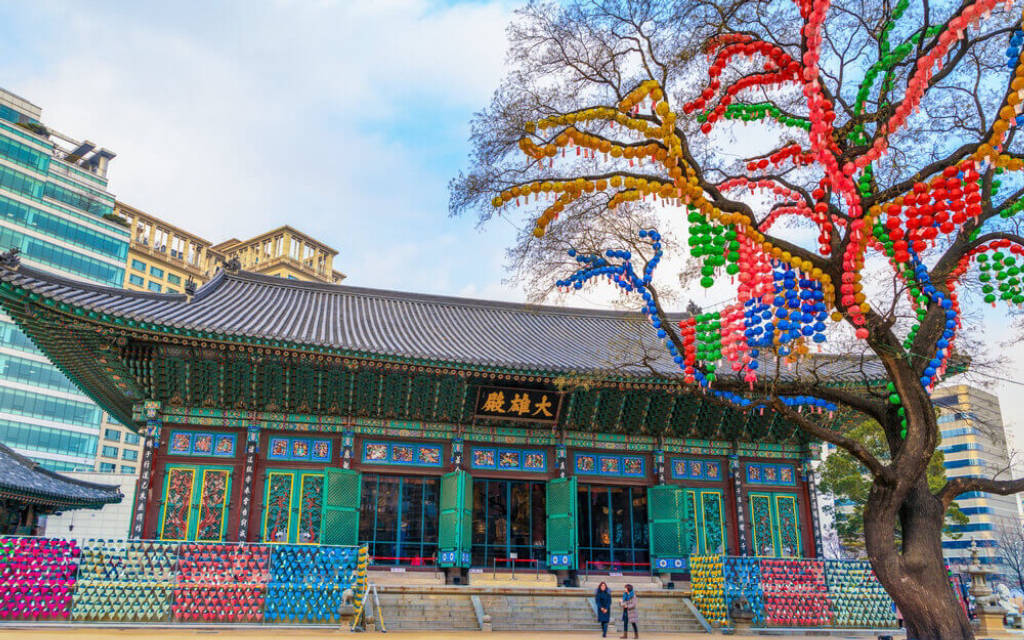

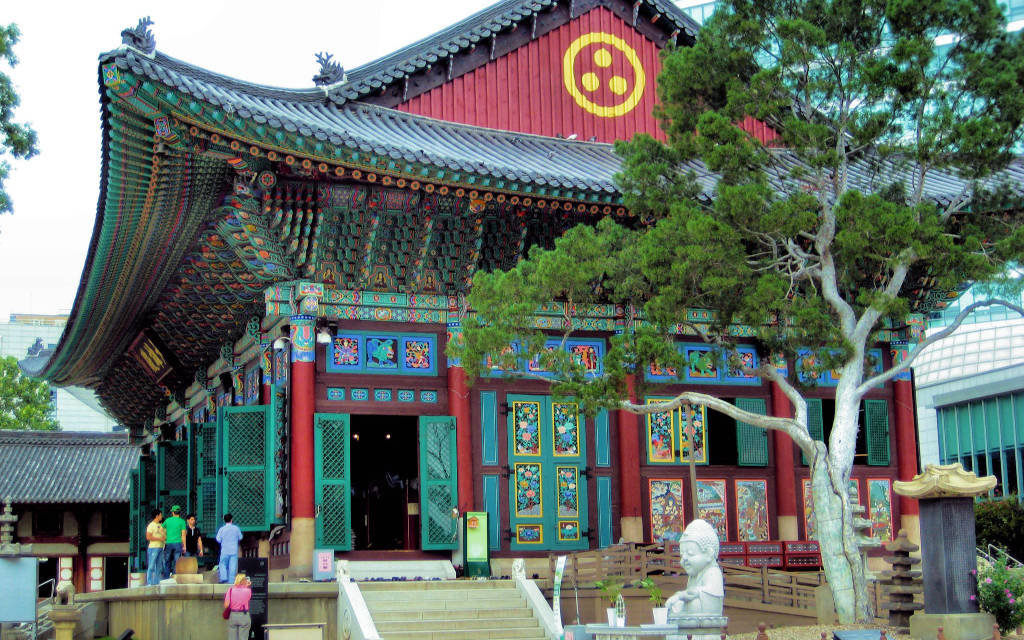

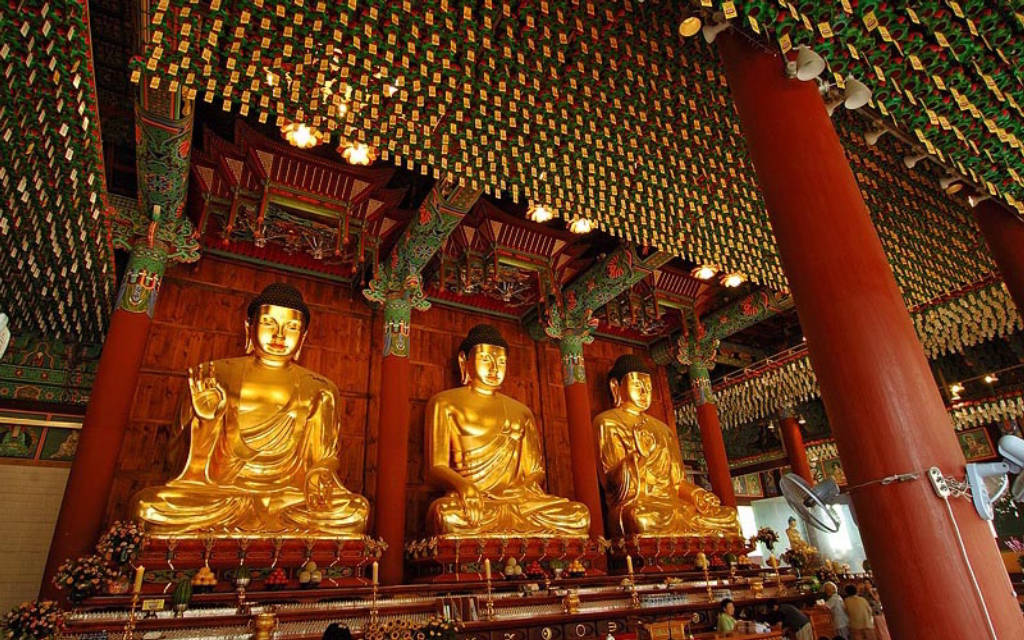
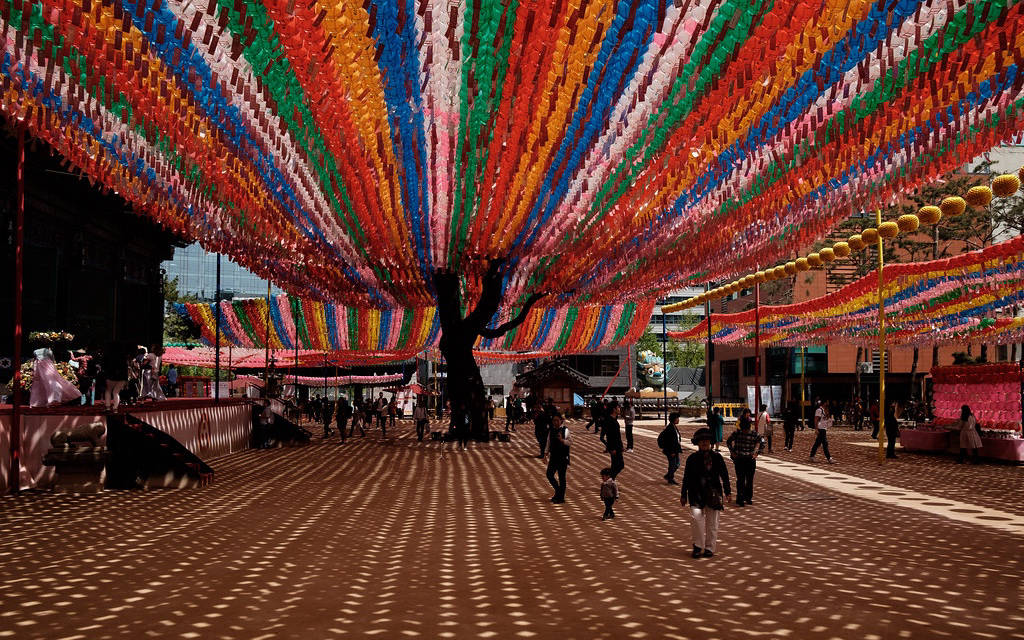
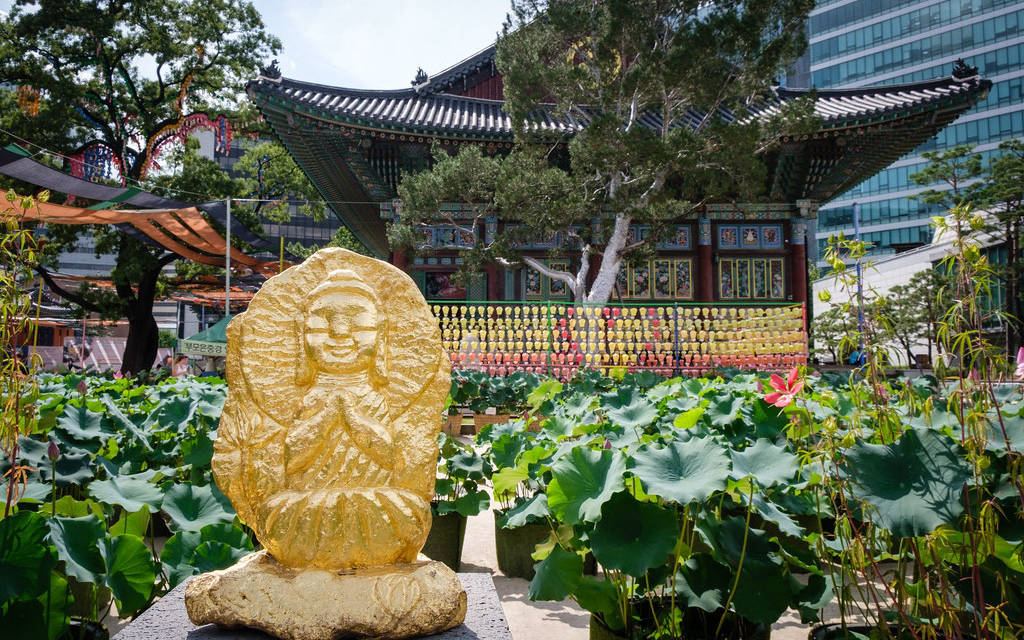

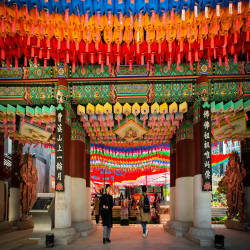





 55 Ujeongguk-ro, Gyeonji-dong, Jongno-gu, Seoul, South Korea
55 Ujeongguk-ro, Gyeonji-dong, Jongno-gu, Seoul, South Korea